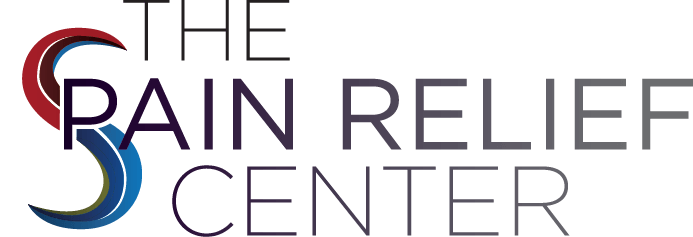SPHENOPALATINE GANGLION BLOCK
Treatment for Headaches, Migraines, and Facial Pain
MIGRAINE TREATMENT OPTIONS

Headache pain and facial pain are some of the most recurring sources of pain. Complex regional pain syndrome, headache disorders, and trigeminal neuralgia can all lead to chronic, debilitating pain. Luckily, one nonsurgical treatment option exists for these conditions. A sphenopalatine ganglion block could be the solution you’ve been searching for to achieve lasting pain relief.
At The Pain Relief Center, we take pride in offering a wide array of nonsurgical treatments to help our patients achieve pain relief. If you’re suffering from atypical facial pain, chronic migraine pain, or other sources of head and facial pain, a sphenopalatine ganglion block may work for you. To schedule an appointment with one of our experienced pain management specialists, please call our office at 214-709-1904 today.
What Is the Sphenopalatine Ganglion?
The sphenopalatine ganglion (SPG) is a bundle of nerves located deep inside the middle of the face. It is composed of sympathetic, parasympathetic, and sensory nerves. Sometimes, one of these nerves can become sensitized after infections or trauma. The activity in this sensitized nerve can then lead to pain.
If the sphenopalatine ganglion (SPG) sends continuous pain signals to the brain, this can greatly impact one’s quality of life. However, modern medicine has given us a way to treat this pain. Read on to learn more about how a sphenopalatine ganglion block could improve your quality of life if you suffer from chronic pain.
What Is the Sphenopalatine Ganglion’s Role in Headaches?
The sphenopalatine ganglion plays a large role in the development of headache disorders. All of the nerves in the bundle are linked to the trigeminal nerve, which is the main nerve responsible for chronic headaches. It is located behind the nose, and carries sensory information, such as pain signals, to the brain. Because the SPG is connected to the trigeminal nerve, it plays an important role in both facial pain and in headache disorders.
What Is a Sphenopalatine Ganglion Block?
A sphenopalatine ganglion block is a nonsurgical procedure in which a doctor administers a local anesthetic to the sphenopalatine ganglion. It is a highly effective treatment option for various pain syndromes around the face and head area. Depending on the individual needs of each patient, we will assess which local anesthetic delivery method is best for you.
What Are Sphenopalatine Ganglion Blocks Used to Treat?
A sphenopalatine ganglion block can be used to treat a wide array of conditions. Your pain physician may recommend a sphenopalatine ganglion block if you suffer from any of the following conditions.
- Facial pain
- Complex regional pain syndrome
- Chronic migraine pain
- Chronic cluster headache pain
- Migraine headaches
- Pain from nasal congestion
- Posttraumatic headache pain
- Certain types of cancer pain
- Other sources of head pain and facial nerve pain
Importantly, SPG blocks are highly effective at treating even acute pain in the head and face. Patients suffering from pain in their sphenopalatine ganglion can achieve lasting pain relief from this simple procedure.
Who Is Eligible for a Sphenopalatine Ganglion Block?
Not every patient is eligible for every treatment option. Certain risk factors may lead your doctor to recommend treatments other than a sphenopalatine ganglion block, depending on your medical history. However, patients who suffer from facial pain, chronic migraine pain, cluster headache pain, or trigeminal neuralgia can greatly benefit from this treatment. The best way to confirm whether or not you qualify for a sphenopalatine ganglion block is to speak with your doctor.
At The Pain Relief Center, we offer a variety of solutions for each condition that we treat, meaning you’ll always have options with us. Schedule an appointment with our pain management providers for a proper evaluation and we’ll develop an effective treatment plan that works for you.
How to Prepare for a Sphenopalatine Ganglion Block
Before any procedure, your doctor will explain every step of the process to ensure that you are as prepared and comfortable as possible. Be sure to ask your doctor which medications you should stop taking, and for how long. Certain medications could react poorly or cause excessive bleeding during the procedure.
You should also inform your doctor if you are taking antibiotics, or if you have symptoms of a cold, flu, or fever. This could delay your procedure appointment date. Additionally, you’ll need someone to drive you to and from the appointment, as we generally recommend that patients refrain from driving after a procedure.
If you have any other questions or concerns about the treatment, always ask your doctor. We are happy to answer any and all questions that you may have, as we want you to be as informed and comfortable as possible.
What Happens During a Sphenopalatine Ganglion Block?
Before you undergo a sphenopalatine ganglion block, we will explain the entire procedure to you. There are two main methods for administering the local anesthetic: by using a cotton swab and via an injection. Below, we outline the basic steps of the procedure.
- After you arrive, we will administer a nasal spray to help open the nasal cavity and reduce mucus production. You may also be given a numbing spray of lidocaine.
- You will proceed to the treatment room and lie down on the table next to the fluoroscope (X-ray) machine. This device will help your doctor to guide application of the local anesthetic to the proper position.
- Your doctor will slowly insert the catheter or cotton swab into your nose, guiding it to the sphenopalatine ganglion using the fluoroscope. Once it is positioned properly, the local anesthetic will be administered, either through an injection or through the cotton swab.
- You may feel some slight discomfort, but it shouldn’t last long. You may also feel some of the medicine in the back of your throat, which could cause you to cough.
How Does a Sphenopalatine Ganglion Block Work?
Sphenopalatine ganglion blocks work similarly to other nerve blocks. When the local anesthetic is administered to the nerves that are sending the pain signals, it blocks the signals from those nerves. If the nerves cannot transmit their pain signals to the brain, the pain will not register, and thus the patient will not feel it.
What Happens After a Sphenopalatine Ganglion Block?
Once the procedure is complete, you will remain in the recovery area for at least ten or fifteen minutes. You’ll need to keep lying down to allow the medicine to properly absorb. If you feel numbness in the back of your throat or if you have a bad taste in your mouth, this is normal. You should be able to eat after you return home, but be careful if your throat is still numb.
Risk Factors and Potential Complications of a Sphenopalatine Ganglion Block
The primary complications of SPG blocks come from the insertion of the needle rather than the medication. Side effects and complications are rare, but still possible. Your doctor will inform you of the following side effects before you undergo the procedure.
- Bleeding
- Infection
- Allergic reaction to the medication
Be sure to ask your doctor about any other potential side effects or complications that you may experience during the procedure.
How Long Does a Sphenopalatine Ganglion Block Last?
This varies from person to person, as not every person’s body reacts the same way to the medication. Some patients have relief for several days, while others have relief for a few weeks. We tend to see a slight increase in the length of pain relief for recurring injections. In some cases, multiple injections are needed in order to provide lasting pain relief. Depending on your pain level and the condition that you’re treating, you may need only two injections, or several. Again, your doctor will inform you of the best course of action in your specific situation.
How Often Can You Receive a Sphenopalatine Ganglion Block?
If you need multiple injections to see lasting results, you likely will not receive more than one injection in a two-week period. Depending on how long your relief lasts from one injection, your doctor will decide how frequently you can receive these treatments.
Will Insurance Cover an SPG Block?
This is a difficult question to answer, as not every pain management specialist will accept the same types of insurance. Some insurance companies will cover SPG blocks to treat cluster headache pain, trigeminal neuralgia, and migraine headaches. We recommend speaking with both your insurance provider and your doctor to determine whether or not your policy covers SPG blocks.
Contact The Pain Relief Center Today
At The Pain Relief Center, we understand how much frustration can come from suffering with chronic pain. Chronic migraine pain, idiopathic facial pain, and other conditions can be incredibly difficult to live with. Luckily, the pain management specialists at our office have extensive experience dealing with head pain, trigeminal neuralgia, and various headache disorders. If your chronic pain is keeping you from living your life to the fullest, The Pain Relief Center is here for you. To schedule an appointment with us, please call our office at 214-709-1904 today.




